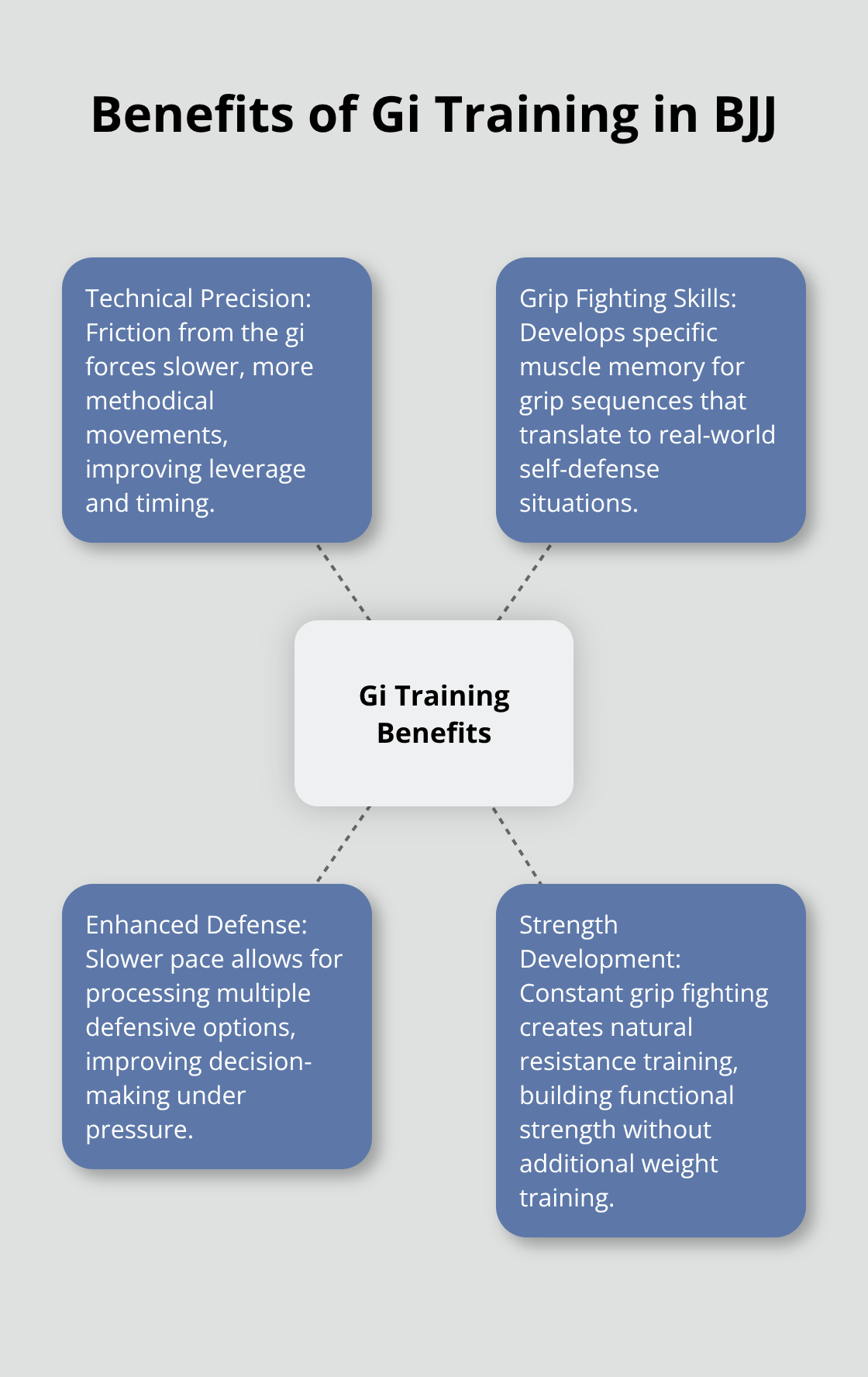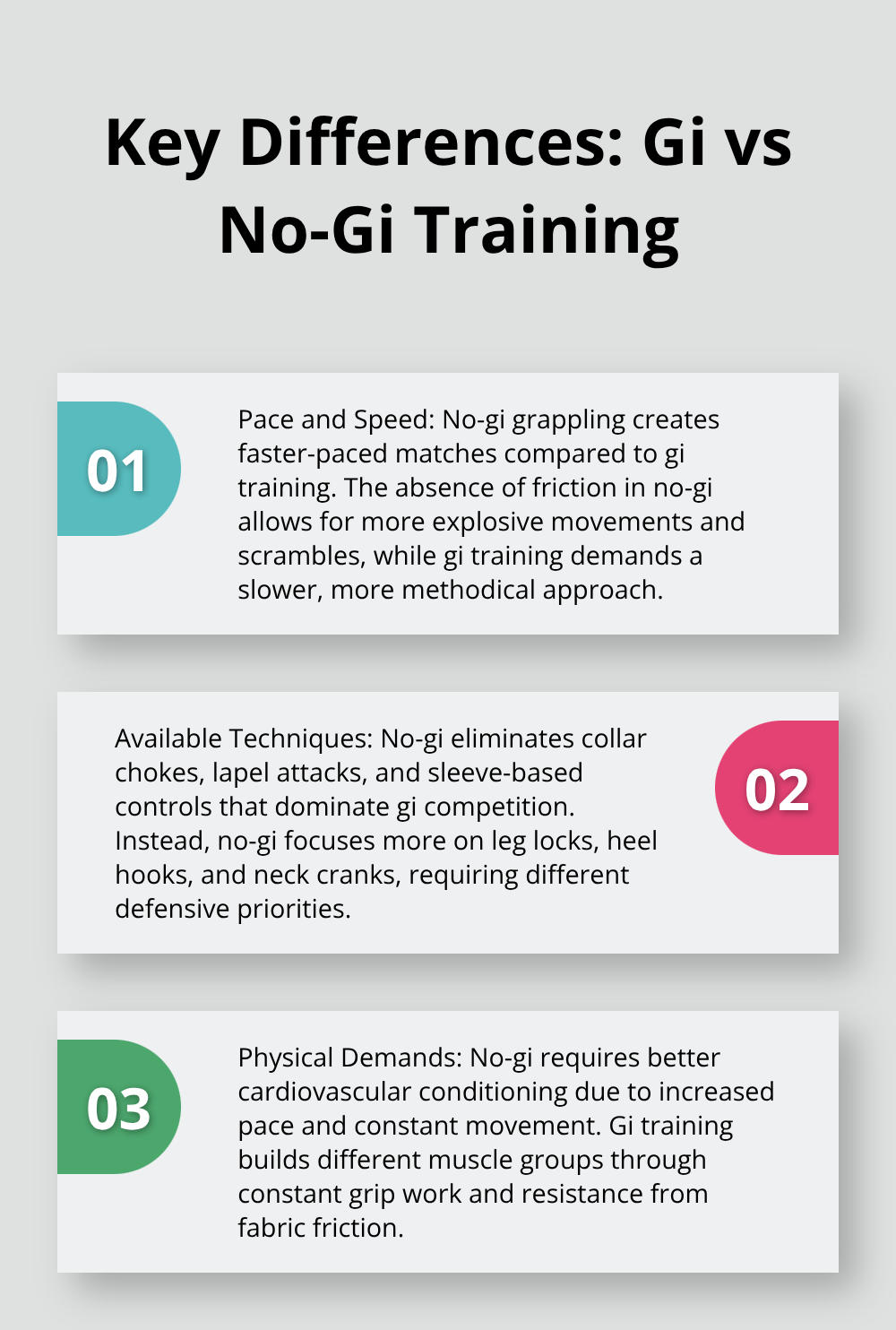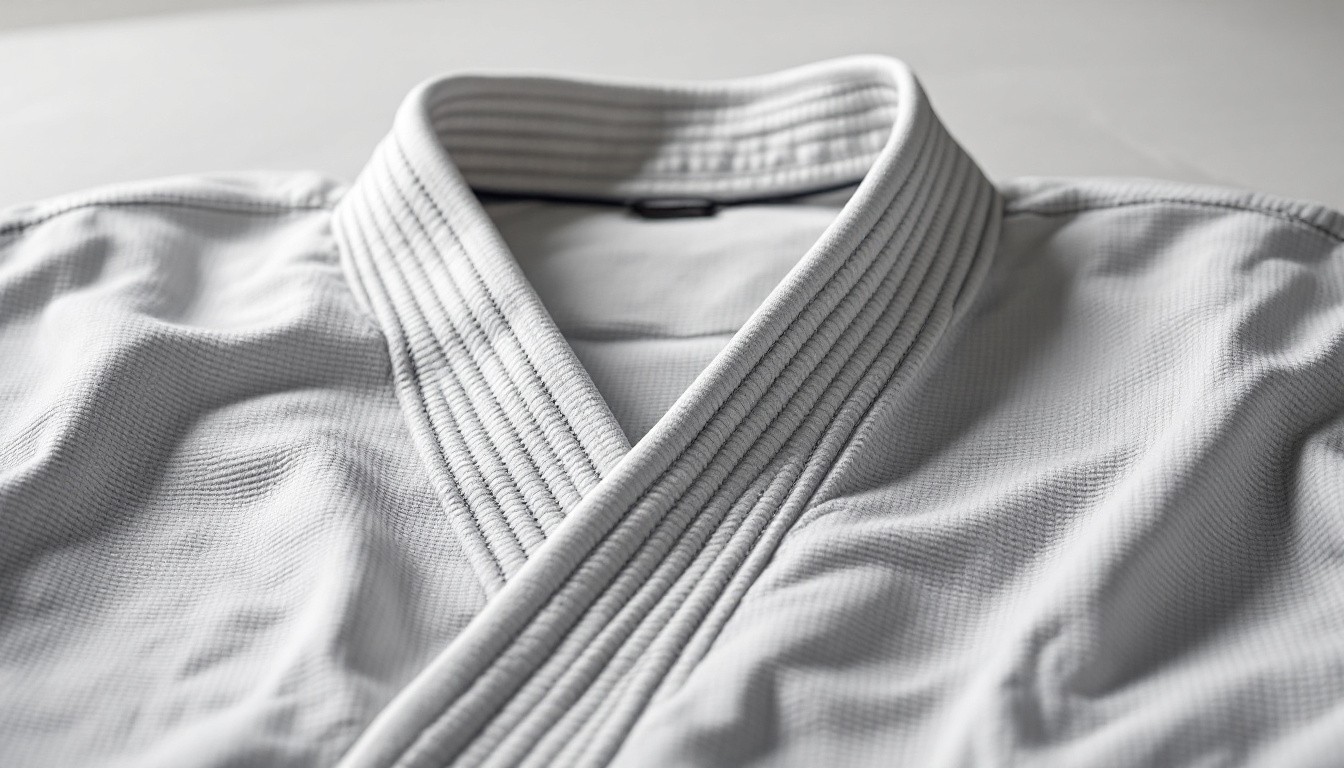The kimono jiu jitsu uniform represents far more than simple training attire in Brazilian Jiu Jitsu. This traditional garment shapes how practitioners learn, fight, and develop their grappling skills.
At Jiu Jitsu, we see students transform their technique when they train with the gi. The fabric creates unique gripping opportunities and forces slower, more methodical approaches that build fundamental skills every grappler needs.
Why Does the Gi Connect BJJ to Its Martial Arts Roots
From Judo Mats to Brazilian Beaches
The Brazilian Jiu Jitsu gi traces its lineage directly to Jigoro Kano’s judo uniform, created over 100 years ago in Japan. Kano designed this heavy cotton garment to withstand intense training sessions, and he chose the distinctive off-white color that traditional kimonos inspired. When Mitsuyo Maeda brought these techniques to Brazil in the early 1900s, the Gracie family adapted both the techniques and the uniform.
The Gracies modified the original loose-fitting judo gi into a more fitted design that better suited their ground-fighting innovations. This evolution wasn’t cosmetic – the tighter fit prevented opponents from using excess fabric against the wearer while it maintained the grip opportunities that make gi training so effective.
The Uniform as Discipline Teacher
The International Brazilian Jiu-Jitsu Federation requires gis to be of uniform color, with white, royal blue, or black being the only permissible colors for competition. This regulation reinforces the uniform’s role in maintaining tradition and equality on the mats.

Training in the gi forces practitioners to slow down and think strategically rather than rely on speed and athleticism alone.
This pace develops patience and technical precision that translates into better overall grappling skills. The belt system tied to gi training creates clear progression markers from white to black belt, with each promotion reflecting not just technical skill but also understanding of the art’s cultural values.
How the Gi Shapes Modern Training
Students who consistently train in the gi often demonstrate better posture, more controlled movements, and deeper respect for training partners compared to those who focus solely on no-gi training. The fabric itself teaches practitioners to use their opponent’s clothing as a weapon (collar chokes remain among the most effective submissions in BJJ).
Roger Gracie exemplifies how gi techniques can dominate at the highest levels of competition. His mastery of basic collar chokes and guard work shows how traditional gi training builds the foundation for championship-level performance. This technical emphasis naturally leads to understanding how gi training develops specific advantages that no-gi simply cannot replicate.
How Does Gi Training Transform Your Grappling Skills
Friction Creates Technical Precision
The gi changes how practitioners approach grappling by creating friction and grip points that demand technical precision over athletic ability. The fabric forces students to slow down and think through each movement rather than rush through positions. This friction teaches proper leverage and timing because explosive movements often fail when opponents can grab sleeves or collars to counter attacks.
Grip Fighting Builds Real-World Skills
Training with the gi develops specific muscle memory for grip sequences that translate directly to self-defense situations where attackers wear clothing. Students learn to control distance and angles through collar and sleeve grips that create natural barriers against attacks. The cross collar choke exemplifies this advantage – practitioners recognize threat patterns early and develop automatic hand placement to prevent collar grips before attacks develop.
Superior Defensive Development
Students who train consistently in the gi develop enhanced escape abilities from mount and side control positions through improved technical understanding. The slower pace of gi rolling allows practitioners to process multiple defensive options simultaneously, which builds decision-making skills under pressure. Guard retention becomes more sophisticated when students learn to use their own gi skirts to create barriers and redirect opponent movement.
Strength Through Resistance Training
Grip breaking techniques develop hand and forearm strength that benefits all aspects of grappling. The constant grip fighting in gi training creates natural resistance that builds functional strength without additional weight training. Students develop superior posture control and frame management because the fabric provides constant feedback about body positioning and leverage points (similar to how wrestlers use underhooks and overhooks for control).
The technical foundation that gi training provides becomes even more apparent when practitioners transition between gi and no-gi formats, where the contrasts in pace and available techniques create distinct strategic approaches.

What Changes When You Switch Between Gi and No-Gi
The transition from gi to no-gi training creates an immediate shift in pace that catches most practitioners off guard. No-gi grappling creates faster-paced matches compared to gi training based on competition analysis. This speed increase forces students to rely more heavily on underhooks, overhooks, and body-lock positions rather than fabric grips.
Speed Demands Different Strategic Approaches
No-gi training eliminates collar chokes, lapel attacks, and sleeve-based controls that dominate gi competition. Practitioners must replace these techniques with leg locks, heel hooks, and neck cranks that require different defensive priorities. Students who focus exclusively on gi training often struggle with no-gi leg entanglements because the gi restricts leg mobility and creates different escape routes.
The absence of friction in no-gi allows for more explosive movements and scrambles. However, practitioners lose the methodical control that gi grips provide for dominant positions. Athletes must chain techniques together more rapidly before opponents can escape or counter.
Technical Gaps Emerge in Single-Format Training
Students who train exclusively in one format show clear technical weaknesses. Gi-only practitioners often lack leg lock defense and explosive movement patterns that no-gi demands. No-gi specialists struggle with grip control and patience under pressure when they face gi opponents.
The most successful competitive grapplers like Gordon Ryan and Marcus Almeida excel in both formats. Each style addresses weaknesses that the other creates (producing more complete technical development and tactical understanding).
Physical Demands Shift Between Formats
No-gi training requires better cardiovascular conditioning due to the increased pace and constant movement. The slippery nature of skin-on-skin contact forces athletes to work harder to maintain positions. Gi training builds different muscle groups through constant grip work and resistance from fabric friction.
Athletes who cross-train develop superior adaptability because gi techniques teach leverage and timing while no-gi develops speed and athleticism. This combination creates well-rounded grapplers who can adjust their game plan based on the format they face.

Final Thoughts
The kimono jiu jitsu uniform remains fundamental to complete Brazilian Jiu Jitsu education. Students who train exclusively in no-gi miss the technical precision and strategic approach that gi practice develops. The fabric teaches patience, grip control, and leverage principles that create stronger defensive skills across all situations.
Beginners benefit most from gi practice because the slower pace allows proper technique development before speed and athleticism take over. Advanced practitioners use gi sessions to refine details and explore creative attacks that no-gi cannot provide. The belt progression system tied to gi practice creates clear goals and maintains the martial art’s cultural traditions.
We at Jiu Jitsu incorporate both gi and no-gi classes because each format addresses weaknesses the other creates (producing well-rounded practitioners who adapt their techniques based on the situation they face). Our Souza Grappling Co. facility provides the space for students to develop complete skills through both methods. This approach produces versatile grapplers ready for competition or self-defense scenarios.




